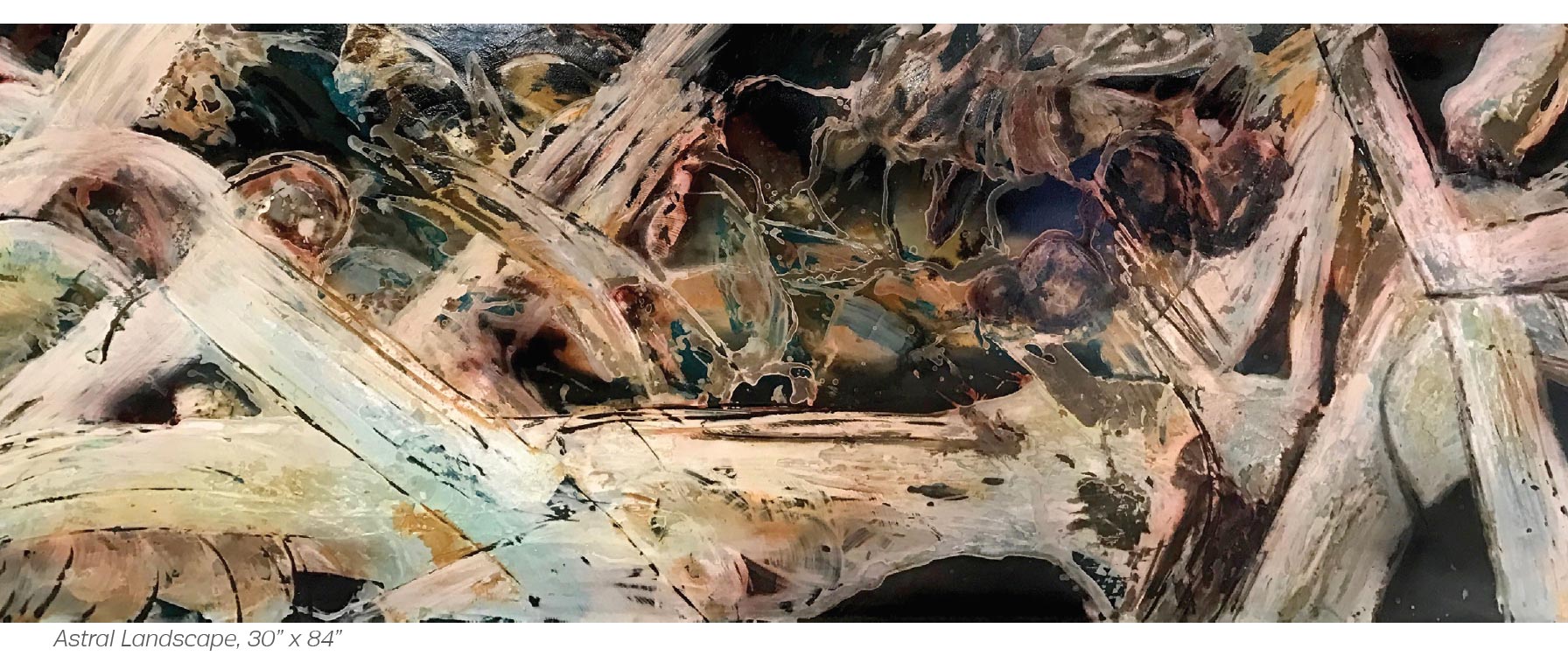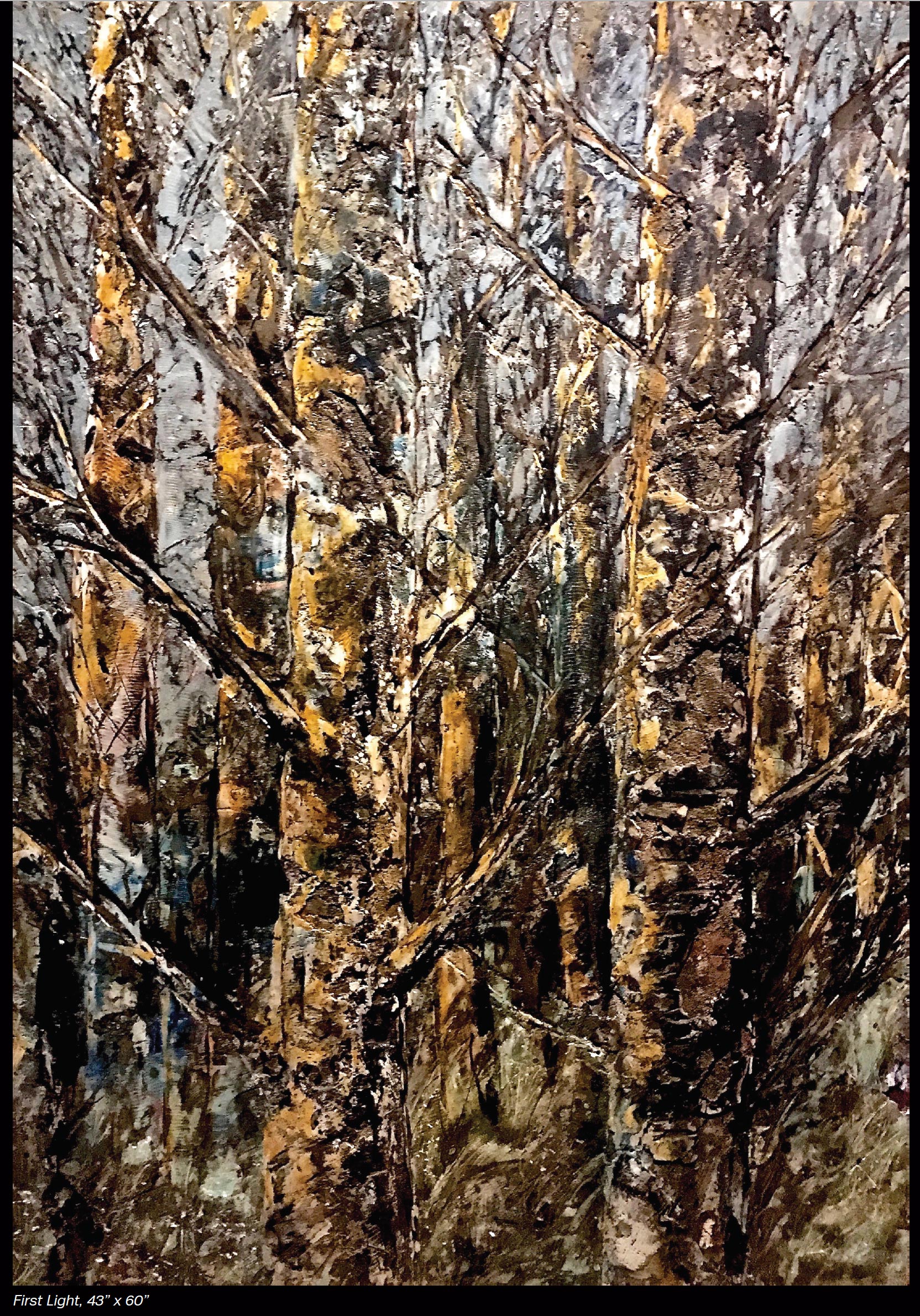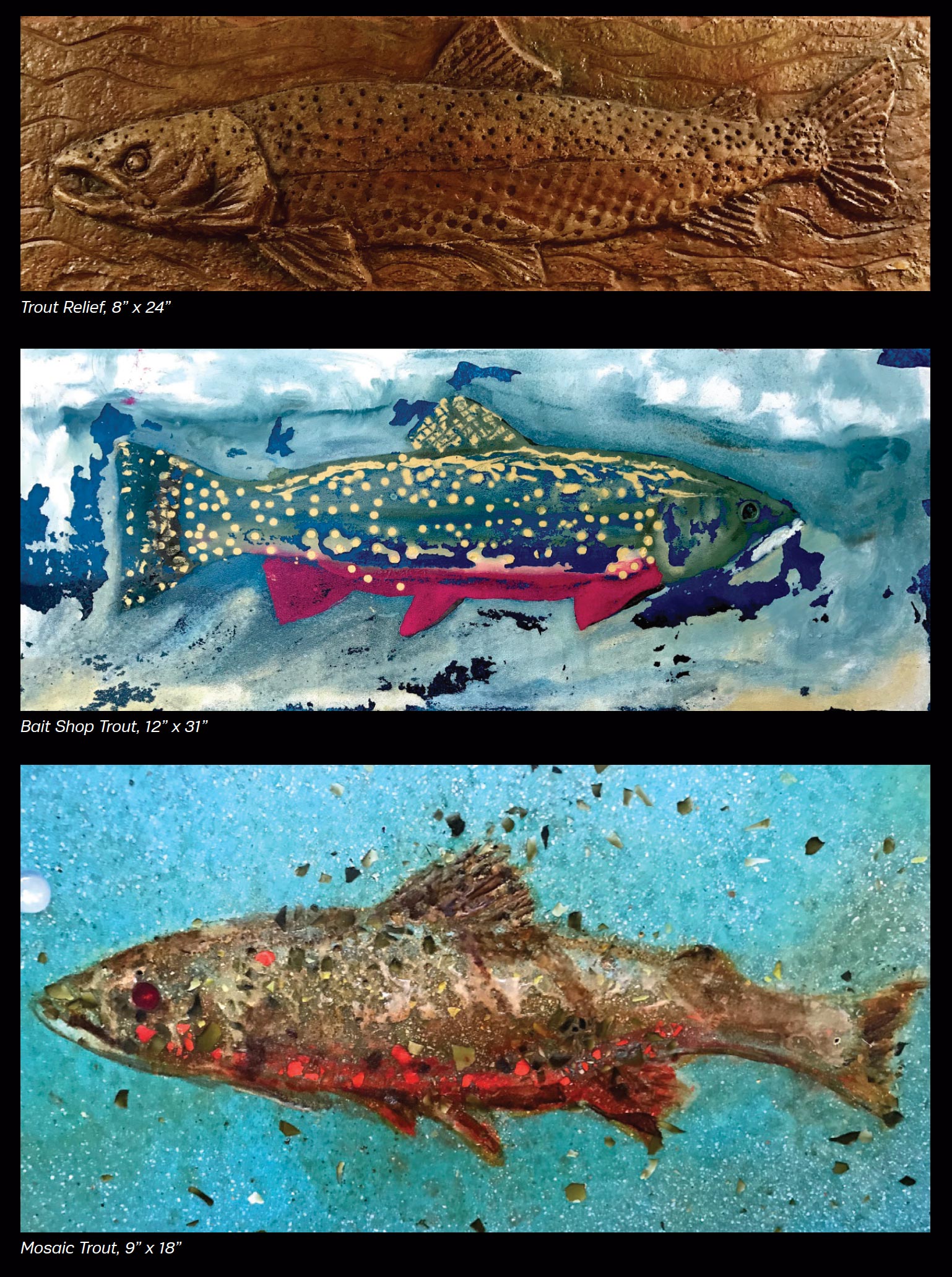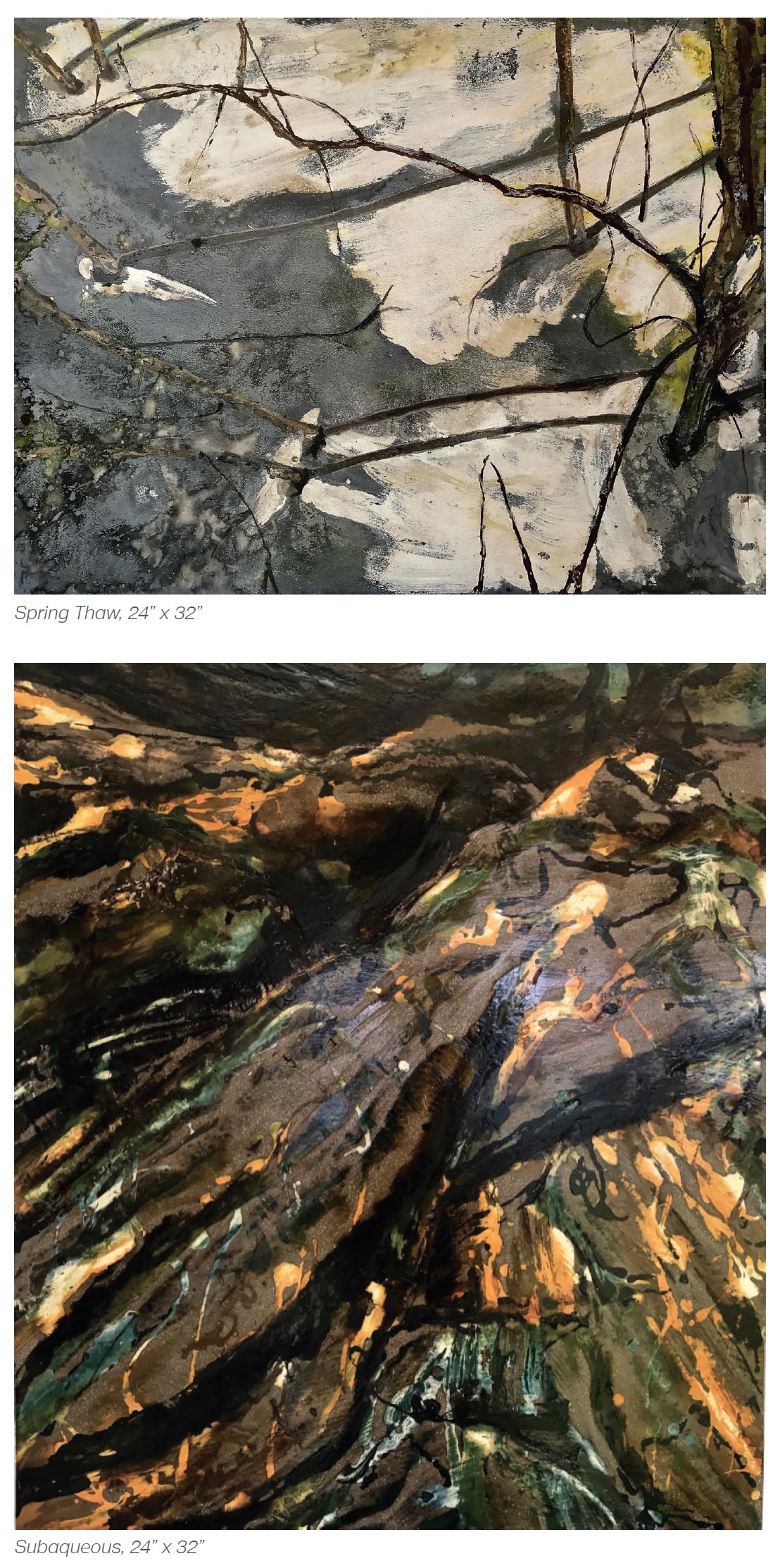Artist Jon Nasvik discovers fine art through his commercial business
Jon Nasvik has lived in Sun Valley since 1981. Many know him for his niche decorative concrete business, Cliffhangers, Inc., yet few may know Nasvik for his fine art made from concrete. Although concrete is not a common exhibition medium, it is Nasvik’s intention to popularize it. Discovering and uncovering a new release for this extremely versatile and, perhaps, undervalued material in the art world excites Nasvik. He studied studio art in the 1970s at the University of Minnesota, and it appears that he has come full circle from what he learned as an occupation that paid for college to a passion for art he has always enjoyed.
“People typically think of concrete as thick and heavy, so it surprises them to see large pieces thin and light enough to hang from a picture-frame wire on an average wall.”
Five decades of using concrete as a decorative product has filled a virtual toolbox of experiences for Nasvik. Concrete’s multi-faceted applications take on entirely new meanings and structure when working toward fine art as a finished product—sans the functionality and longevity and the unique beauty and form.
It is in the nature of concrete and its chameleon-like possibilities for expression and ideas where Nasvik finds inspiration. Elements of this organic sensibility are evident in most of Nasvik’s work, whether it’s representational or abstract. One might be reminded of the desert, which can be seen throughout the texture and look of his pieces. He notes, “When I showed my work, most people looked for more than abstract design. They went beyond the pattern, texture, and color and added descriptions of bones, crystals, aerial landscapes, and underwater riverbeds. I observed that most people either need to look for some familiarity in art or I do.”
Tinting white cement with dry or wet pigment, most any color can be created so no paint is required. Dribbling, spreading, crushing, imbedding, cracking, and brushing out layers of concrete, then gouging, scratching, hammering, sawing, and grinding are the typical methods Nasvik applies to achieve his art. “Concrete has its own feel, and it can do so much,” he explains. “It can be very thick or paper-thin as well as smooth and shiny as glass or textured.”
Last March, Nasvik added to his concrete art endeavors by teaching a short session to art students at Proctor Academy in Andover, New Hampshire, where students collaborated to create concrete panels for an 8’ by 8’ piece of work that permanently resides at the boarding school. Nasvik reveals, “I’ve been in decorative concrete long enough to tease out ideas that satisfied my creative side but seeing what a group of students at Proctor produced off the cuff was quite inspiring for me. Next March I’m anxious to go back again to see how they put their minds to concrete sculpture.”
Most people think of concrete as a grey masonry building material. However, Nasvik sees it as an endless artistic expression. “I feel as if I’m something of a pioneer,” tells Nasvik. “I’ve done water features, floors, fireplaces, countertops, and much more but because it’s such a versatile medium, concrete can have countless identities.”
Nasvik confesses that he’s not very good at sitting still, hence his original attraction to concrete construction, but he says he’s getting better at it these days and whenever possible, he enjoys time for creative thought. He believes there’s a great deal of potential in this medium and enjoys giving concrete a new identity. It’s a combination of painting and sculpture on a relatively flat plain using fiber-reinforced cement so it can be thin and cut down on weight. He adds, “People typically think of concrete as thick and heavy so it surprises them to see large pieces thin and light enough to hang from picture-frame wire on an average wall.”
Nasvik works in his shop and takes his time to create a piece, but his process evolves from the desire to stay in touch with art, which has always been at his core. As he says, “My work is not just making patterns. Things happen within that are personally fulfilling. I realize everyone will have their own interpretation of my work, which I will also enjoy and find inspiring.”



